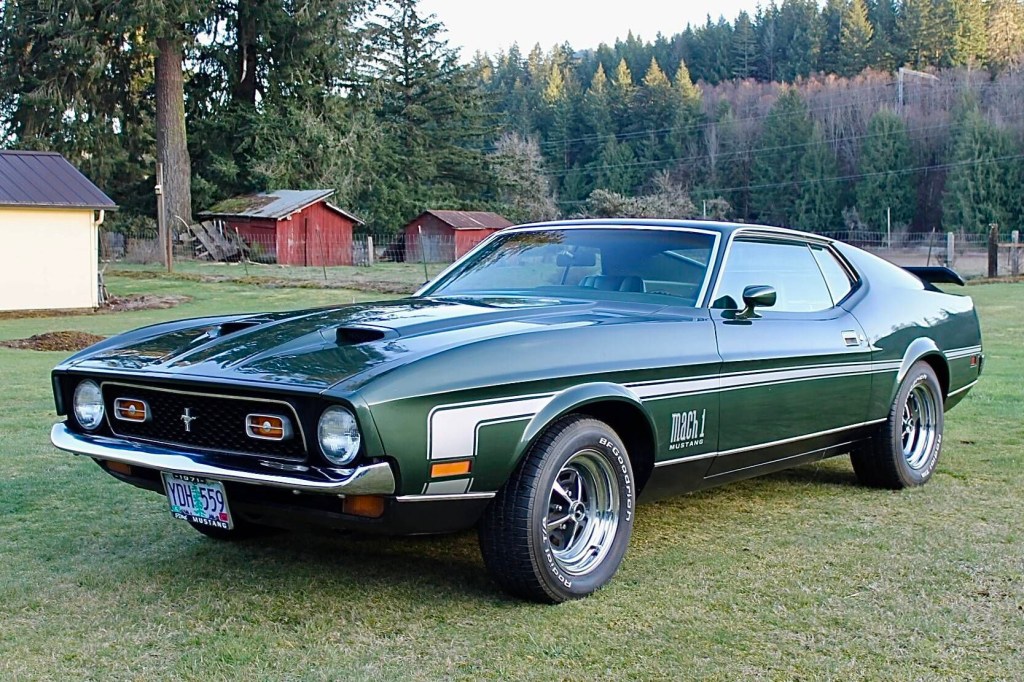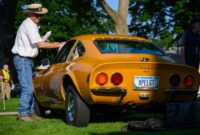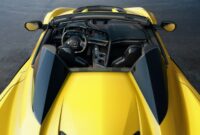The 1970s often receive criticism regarding the muscle cars produced by the Big Three automakers. Indeed, these vehicles had reduced compression ratios, restricted airflow, and diminished horsepower. However, their appeal lay significantly in their distinctive styling. One might ponder what these automobiles would be like if they had generated greater power. Yet, turning this into a hypothetical scenario seems unnecessary since modifications can actually achieve just that.
Rather than waiting around, many resourceful builders have taken initiative, providing their 1970s muscle cars with an extra burst of power while mostly maintaining the original atmosphere. Consider these two classic pony cars currently available for auction.
1970 Ford Mustang Mach 1
and
1973 Chevrolet Camaro Z28
both have their original engines, but both feature some smart upgrades for better performance. They are able to return a bit of that factory pizazz that was taken away.
1971 Ford Mustang Mach 1
By 1971, Ford’s Mustang had matured both conceptually and physically from its original form introduced in 1964. Facing a significant decline in sales, the design team went all out. The creative prowess of these designers particularly paid off with the SportsRoof—also known as the Fastback—variants.
Ford’s literature on the Mach 1 alluded to European style, referencing Italy’s Autostrada and Germany’s Autobahn, both superhighways then still without any speed limits. Mach 1 styling flourishes included color-matched dual “racing” mirrors and front spoiler, driving lights, and an optional hood with twin scoops. Ford fitted all Mach 1s with a lowered “competition suspension” and sporty bias-lay Wide Oval tires.

Under the hood of every Mach 1 was a V8 engine. Buyers had the option of a base 302, a pair of 351s—two or four-barrel—and two different 429 Cobra Jet engines. This 1971 Ford Mustang Mach 1 came from the factory with a 351-cu.in. “Cleveland” V8 that was rated at 285 horsepower when new. Still sporting a respectable 10.7:1 compression ratio, the engine was not yet smogged to oblivion.
In 1971, Ford exclusively equipped its most potent small-block V8 in the Mustang Boss 351. This engine boasted a rating of 330 horsepower thanks to features like a robust camshaft, a compression ratio exceeding 11:1, an aluminum intake manifold, customized cylinder heads, and additional enhancements. Although the “M” in the vehicle identification number confirms that this Mach 1 came from the factory with a 351 Cleveland engine, it is presumed that the original motor has since been rebuilt to meet the specifications of a Boss 351.

Mustang 351 Engine Mods
The 351 build engine features Edelbrock aluminum cylinder heads, a dual-feed Holley four-barrel carburetor, headers, and dual exhaust. This vehicle comes with a four-speed manual transmission. According to the data plate, it houses a 3.25 open rear differential. Although there’s no accompanying dyno sheet, Oregon Motor Company, our collaborator for the past six years, mentions that the car is “in excellent condition.”
The description for this refurbished 1971 Ford Mustang Mach 1 351 states that the Dark Ivy Green exterior has no imperfections. The accompanying images clearly depict an impressive Mustang. This vehicle was initially bought in Oregon, which is also home to the dealership handling the sale. Both a Marti Report and a duplicate of the original purchase receipt come along with the transaction.
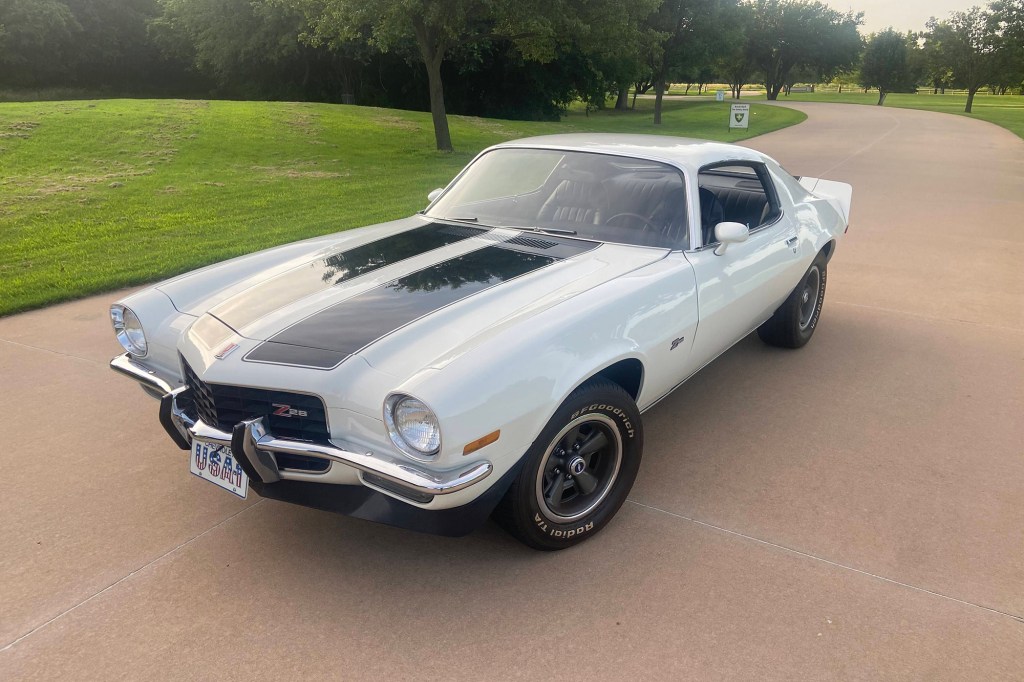
1973 Chevrolet Camaro Z28
Roger Penske and Mark Donohue played crucial roles in cementing the Camaro Z28’s legacy through their victories in the Trans-Am series during 1968 and 1969. Chevrolet originally designed the Z/28 model specifically for racing purposes, featuring a distinctive Z-rated 302-cubic inch V8 engine. This particular motor ceased production in 1970 coinciding with the introduction of the second-generation F-body platform. Instead came the solid-lifter LT-1 350-cubic inch V8 engine producing up to 360 horsepower. By 1972, the iconic “slash” symbol from the car’s designation had been removed.
Similar to others, Chevrolet faced challenges due to stringent emission standards. In 1973, the LT-1 became obsolete, and the Z28 with its 350-cubic-inch V8 engine also underwent changes; both had identical codes for their engines. This particular engine boasted an output of 245 horsepower according to SAE net ratings, which were lower than past gross figures because of reduced compression ratios. Despite these adjustments, this remained a commendable power level back then, one that wouldn’t be surpassed by the Camaro until two decades later.
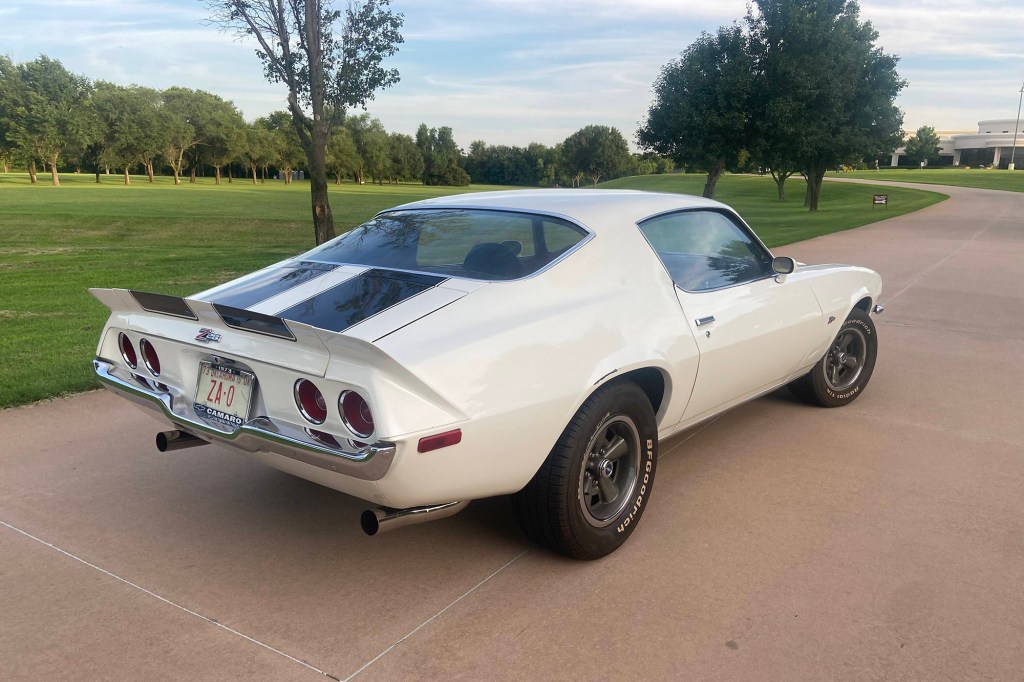
Camaro Z28 Engine Mods
Similar to the ’71 Mach 1 mentioned earlier, this 1973 Chevrolet Camaro Z28 comes equipped with its original engine but includes several enhancements for increased performance. Instead of using a hydraulic camshaft, a solid-lifter LT-1 unit was fitted into the stock 350 engine. The vehicle now utilizes an electronic fuel injection system from FiTech, replacing the old four-barrel carburetor. This modern fuel delivery system is mounted onto an aluminum intake manifold. Other notable additions include headers and a high-performance exhaust system. Additionally, this particular Z28 retains its original four-speed manual transmission.
The restoration of this vintage Chevy included a bare-metal respray in the original Antique White with black stripes livery. This chrome-bumper Z28 looks to remain in excellent condition. Even the undercarriage looks clean. The seller included photos of some of the paint work in progress for the listing, showing the extent of disassembly that went into the restoration.

When it comes to 1970s pony cars, Chevy and Ford started to turn to style over power. But they did provide some pretty good raw material to work with in the guise of Ford’s 351 Cleveland and Chevy’s Z28 350.
Which one of these impressively customized pony cars would you want to have in your garage? Make sure to check them out first at ctions for a more detailed view.
1971 Ford Mustang Mach 1 with the 351 Cleveland Engine
and this
1973 Chevrolet Camaro Z28
To understand thoroughly the reasons behind our request.
The post
Which of These Customized Mustangs Would You Pick: ’71 Mach 1 or ’73 Z28?
appeared first on
The Online Automotive Marketplace
.

